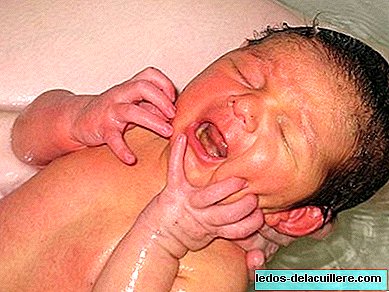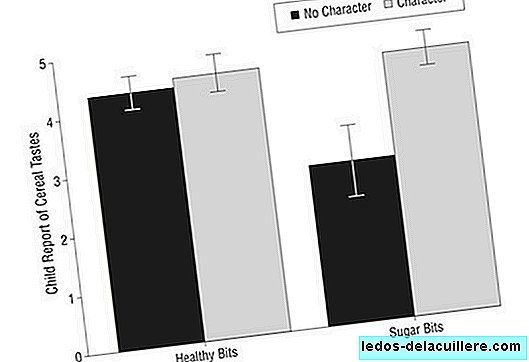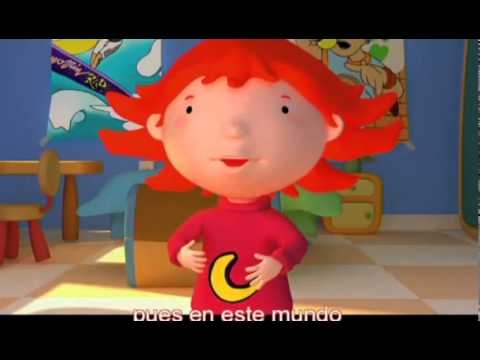
One of the great doubts of mothers and fathers when they have a baby boy is if they have to lower the skin of the foreskin so they don't have phimosis.
To most adults, as far as I know, nobody did anything special to us, so most of us should think that you don't have to do much about it. However, many pediatricians often recommend that the baby's foreskin be lowered more and more, to make it more elastic.
Some even lower the foreskin by force, producing pain and some wounds that then heal spontaneously, because "if it had not been done now we would have to operate later."
I do not agree with this practice and, in fact, I must be one of the parents who least touches the penis of their children. I will explain why and also let's see what is really recommended.
Babies have prepucial adhesions up to 12 months
When babies are born, the foreskin (the skin of the final part of the penis that covers the glans) protects the glans so intensely that it comes as standard attached to it. Until the year the adhesions are so evident that the strange thing is to be able to lower the skin of the foreskin, so until that moment it is a bit absurd to pretend that it moves and slides down showing the glans.
There are many babies who have gone home crying and with wounds in the foreskin because a pediatrician (or a pediatrician), at six months of age (month up, month down) has considered it was very closed.
This maneuver is discouraged for two very obvious reasons: first, because as we said Has no sense. The foreskin and the glans are attached and that is not a problem, it is normal. Second, because the last thing to do if what is intended is for a skin to be elastic is to hurt it, because wounds produce scars and scars always have less elasticity than healthy and intact skin.
After 12 months the adhesions begin to disappear
As of the year, little by little, the adhesions gradually disappear, but it is not a thing that happens in a few weeks or months. It is something that is happening in the following years (yes, I have said years).
To give an example, in the 2-year review of my children, the pediatrician lowered his foreskin to assess phimosis and said, "Very well, I see that your foreskin is going down every day." The reality is that, as I said at the beginning, he congratulated us for something we don't do, because all I do is go down a little from time to time so that a little water and soap comes in, let's go, for hygiene.
From this it follows (not because of my children, but because it happens in the vast majority of children) that if you do nothing, the adhesions gradually disappear.
Children are the first "antipymosis agents"
Many mothers are surprised when I tell them that they don't have to do anything but open the foreskin for a little bit, always without forcing (If your child makes a face of "Oh!", you have gone down). It is as if they feel that they are not doing anything for their children, when they could be helping them.
It is good to know, if any mother is left with the feeling that she is not doing anything for her child, that children are the first "antipymosis agents" and that they also do it wonderfully.
The moment you take off the diaper, they start to take the skin of the penis and throw it out, to the side, to stretch, to flush, to put the finger through the hole and to do things that any father would surely not do to himself. Same to avoid subsequent pain.
With all these manipulations, and especially that which consists in stretching the foreskin outwards (and not inwards), they eliminate adhesions and solve phimosis based on adhesions.
How long is it normal for them to have adhesions?
It depends a bit on the considerations of each doctor. If you have one of those pediatricians who likes to pull before the year, it will surely tell you that it is normal until 5-6 months. If you have a pediatrician who bases his work on scientific evidence, he will tell you that at twelve months most children have physiological phimosis and that by three or four years the adhesions disappear.
Towards 5-7 years there is still a percentage (close to 10%) of children who have adhesions (the remaining 90% is resolved without doing anything special) and by 8-11 years it is 6% of children. Well, even at that moment it is considered that it is possible for phimosis to resolve spontaneously.
So what to do when a child has phimosis?
After that, I repeat, until 3 years it is normal for children to have adhesions and the foreskin skin cannot be lowered. Until that age nothing is done unless there are complications such as infections or discomfort because the skin does not slide down the glans.
The only thing to do, for hygiene, is to retract the foreskin a little, without forcing, so that a little water and soap enters.
From the age of three, you can just keep waiting, because it is most likely to be resolved without doing anything special, although there is the possibility of doing a treatment with a medium or low potency corticosteroid cream, which has been proven very effective.
In the center where I work this cream is not used until five or six years, although there are pediatricians who, as I say, begin to use it at three. This cream makes the adhesions disappear, in many cases avoiding surgical intervention.
If there were to operate, when would the intervention be done?
Most specialists recommend not operating until the child is 5 or 6 years old, although seen as seen, if the child has no symptoms, you could still wait a little longer because it could be resolved spontaneously later.
However, if the child has symptoms, such as pain when having erections or if he is doing infections such as balanitis, it may be advisable to intervene before if the corticosteroid cream has not had the desired effect.
Concluding
Answering the question with which I title the entry: no, you don't have to lower the foreskin to babies or children unless it is so that a little water and soap comes in, that is, for hygiene and always without forcing.
Even when we did not do this, the adhesions would disappear with the passing of months or years in most of the children, leaving a few children who would be resolved later, and a few who would be solved with a cream. All of them without the need to lower the skin forcing a little every day, as many pediatricians recommend and without giving wild pulls that produce wounds, pain and crying without need.












